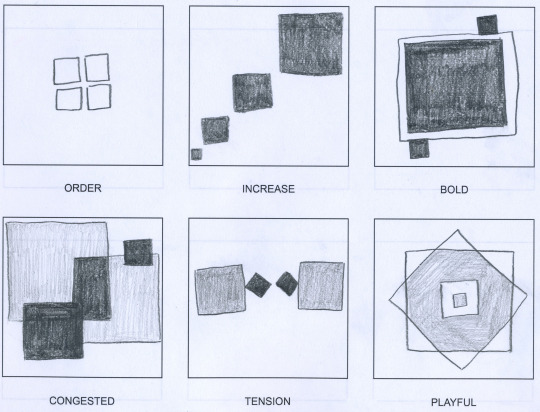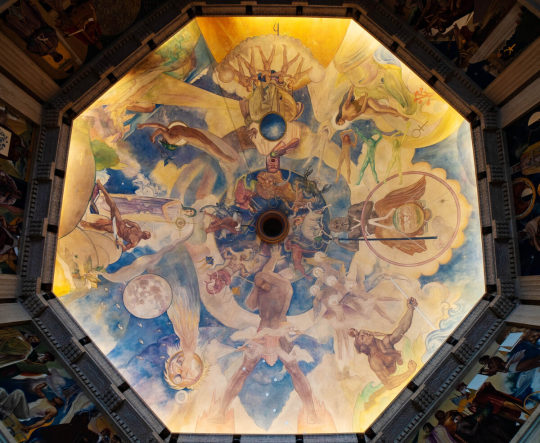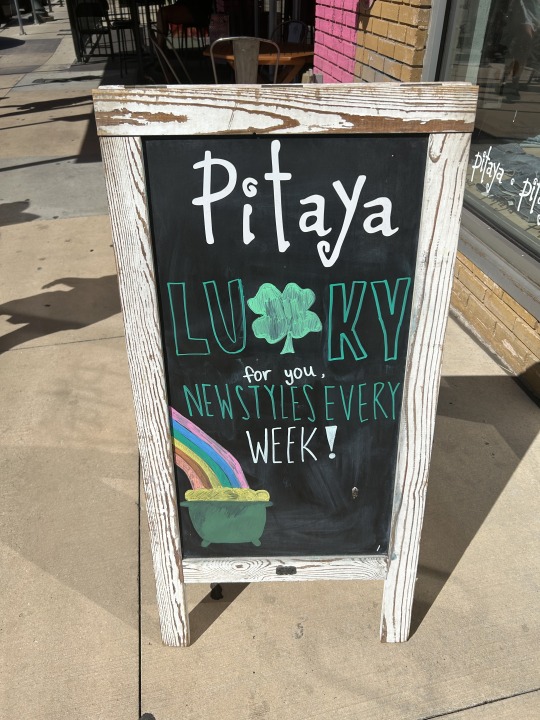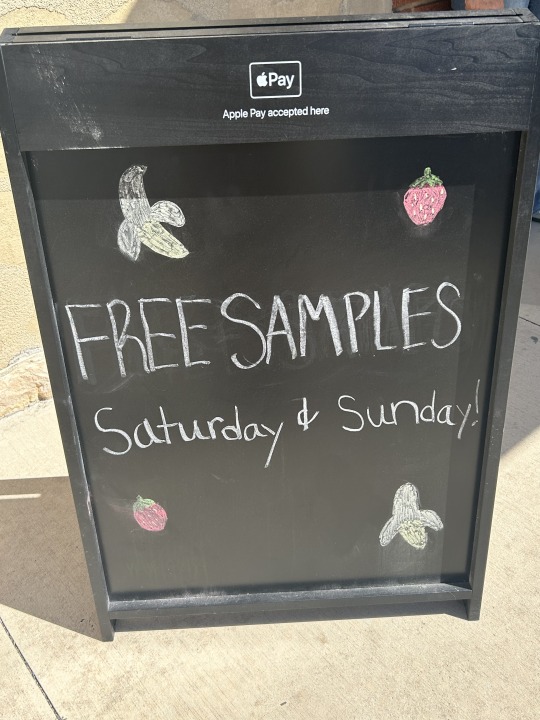Don't wanna be here? Send us removal request.
Text
Composition Practice



This is a mural painted on the ceiling of the Griffith Observatory. It was created by American artist, Hugo Ballin. It depicts figures from mythological and celestial beings relating to astronomy. It includes Atlas holding the world with the zodiacs in it, the star cluster Pleiades, Jupiter holding thunderbolts, Venus and the four seasons, Saturn, Mercury chasing Argos, a woman holding the star of Bethlehem, and the moon and a comet. The ceiling mural has a radial composition with each element being oriented with the center as the top. This creates a circular movement around the work, leading the viewer's eye all around the work, similar to a storybook. Each component is sequential and related by subject matter. The circular composition and shape of the mural is reminiscent of the sun in the sky or other celestial bodies, further relating to its meaning and location in an observatory. Circles are often seen as a holy shape, something with no beginning and no end. Ballin uses this in the composition to emphasize the god's other-worldliness in the mural The mural was painted in 1934. Ballin was a prominent painter in Los Angeles, painting many iconic murals in hospitals, churches, and libraries.
0 notes
Text
Found Typography





While walking around San Marcos there were many hand-drawn signs on chalkboard. They were mostly for food or clothing shops. They had unique, handwritten fonts that felt very friendly and inviting, as if someone had personally wrote it for you. They had little drawings on them as well that gave them a cute and easygoing feeling. They used color and sizing to emphasize specific information to catch people's attention and tell them what's important or highlight buzzwords to get them to read the rest of the sign. All these tactics make it seem like businesses want to seem down to earth and relatable to connect with people so they shop at their store. I think this was an effective strategy, as they stood out to me and I enjoyed the signs.
0 notes
Text
Susan Sontag’s “In Plato’s Cave”
While reading this I was very bored. However this is not a fault of Sontag, but of my own. Her words seemed very intelectual and smart, and I don’t think I’m smart enough to understand some of it. From what I did read, a lot of the stuff she said seemed obvious, like things people know in their subconscious but don’t think about often, so it was interesting to take a closer look at them. Some things that she said were photographers take up space when they take photographs, or that every photo, no matter how doctored, is of something that exists in the world. This reminds me of photos in pop culture that are considered lost media, and how many people all over the world are dedicated to finding the original, unedited image and discover its history and how it came to be.
Photography can be used for documentation and surveillance and is its intentions are dependent on who the photographer is. Whether they are police, student, or just someone with an iPhone camera they all take pictures for various reasons. Sontag describes photography as many things, such as a social rite, specifically in families. Wedding and baby photos are a must have to memorialize these important moments. Photos are taken to show that a family is close and together, even if it’s just for show. I think family photos can also warp a person’s perception of someone. If a person is shown smiling and cooking, for example, you might remember them more fondly than they actually are. The photo plays with the fondness of the memory and twists it into something more pleasant than reality.
0 notes
Text
Reflection on HyperNormalization by Adam Curtis
Going into this, I thought it was going to be a boring art-house style film where everything that was said would be grandiose, pretentious, and boring. However in the first few minutes I was intrigued how Curtis lays out harsh truths from the get-go about the state of the world and how we perpetuate it, whether we mean to or not. He dives into the history of the world and its consequences, and how we got to today. I watched the first 40 minutes of this documentary.
Curtis uses many old photos and videos to help viewers understand the story and get his point across. The archived video is used as an aid to the story. He utilizes things like historic footage and interviews. I enjoyed the interview portions because it showed what real people were saying. They made the film feel more grounded and real. It helps when talking about abstract and past things. Much of what was said still rings true today however. One interview that stuck out to me was of a woman in Russia. This segment was where he explained what hyper-normalization means, and how the people of Russia, post Soviet Union collapse, were disillusioned with their country and leaders. The interviewer asks if she believes in anything and she says "I don't believe in anyone or anything. And I don't believe in you either." She says she has no dreams, and even if she did, they would not come true. It's a soul crushing sentiment and shows how messed up things were, and continue to be with, with incompetent leadership.
Overall this film made me feel worried. Worried about the current state of the world, how we seem stuck in our past mistakes and issues, and how reluctant we are to stop it. Things haven't seemed to change in many places, with people just turning a blind eye or perhaps not even realizing how bad things are. I feel existential dread, sadness, disappointment, and frustration. Dread that the world will not or cannot get better. Sadness at what monsters rule the world and what their horrible minds come up with that worsen everything for everyone but themselves and their allies. Disappointment and frustration that people, past and present, including myself, are just sitting by. Like Curtis said, the leftists became detached and lost touch with reality because of it.
Archives can provide context and clarity to the past. History is preserved and can be studied in the future. We can use it to gain insight and wisdom from the past to apply to the present and future. Archives cans be used in art in many different ways, such as inspiration, reference, sampled, or used in videos such as Curtis has.
1 note
·
View note